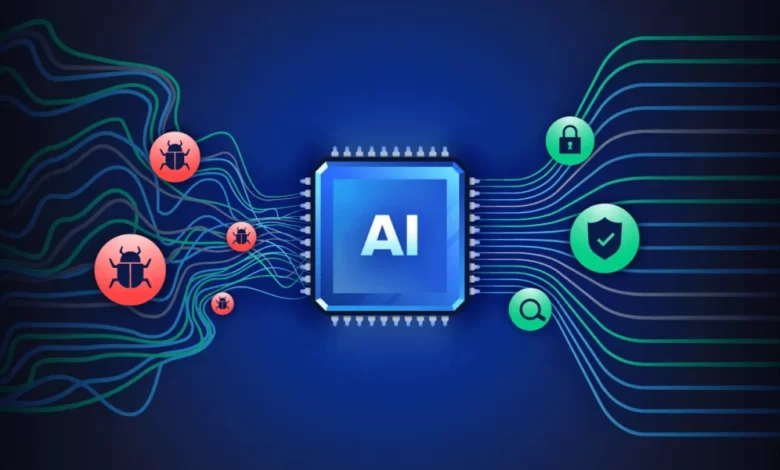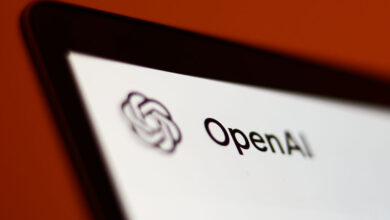The Future of AI in Quality Assurance

Traditional quality assurance (QA) processes have long relied on manual testing and predefined test cases. While these methods have been effective in the past, they are often slow, prone to human error, and lead to development delays and high costs. It is not surprising that Gartner reports that 88% of service leaders believe the current QA approach is inadequate. With AI taking center stage, AI quality assurance can enable teams to deliver higher quality software faster. This article explains how AI in quality assurance streamlines software testing while improving product performance.
What is AI-powered Quality Assurance?

AI quality assurance (QA) uses artificial intelligence to streamline and automate various parts of the software testing process. AI-powered QA introduces several technical innovations that transform the testing process.
Machine learning models analyze historical data to detect high-risk areas, prioritize test cases, and optimize test coverage. AI also automates test data generation, creating a wide range of test data, reducing the need for manual input.
With adaptive testing, AI adapts test cases in real time as user requirements change. Furthermore, AI allows testers to easily build and run tests without writing a single line of code.
Benefits of AI in quality assurance
Here are a few benefits of AI-powered quality assurance:
- Greater efficiency: AI takes over the repetitive tasks that often slow down the QA process. As a result, QA teams can focus on delivering high-performing software instead of manually generating test cases and manually debugging errors. AI also automates test data generation, creating a wide range of test data, reducing the need for manual input. As a result, QA teams run a greater number of test cases and cover a wider range of scenarios. With these benefits, AI-powered QA can help organizations reduce QA costs more than 50%.
- Improved accuracy: AI-powered automation increases QA accuracy by eliminating human errors common in manual testing. Automated QA surpasses manual testing by offering maximum 90% accuracy. As a result, it becomes better at recognizing patterns, bugs, and performance issues that manual testers may miss.
- Intelligent testing: Machine learning analyzes past data to identify high-risk areas and helps prioritize which test cases need attention first. Through AI-powered adaptive testing, testers can update test cases in real-time as needs and requirements evolve.
Emerging trends in AI software quality control
AI is changing the way QA teams work, from speeding up test creation to improving test data management. Here are some emerging trends in AI software quality control:
AI-powered test automation
Creating test cases is now faster and more accurate with AI. Tools such as Taskade’s AI test case generator analyze software requirements and automate test cases automatically to cover a wide range of scenarios. This simplifies the testing process and ensures that you don’t miss any critical areas. The result? Better coverage and higher accuracy, all in less time.
Automatic recovery after test errors
One of the most valuable AI features is automatic recovery from failed tests, or “self-healing.” TestRigor excels at this because it can automatically adapt tests as the application changes. This means fewer interruptions and less time spent fixing test scripts. The tests only fail if AI detects errors relevant to the application requirements.
Improved predictive analytics for quality
Tools such as those used by Atlassian Dive into historical data to predict potential failures and identify root causes before they become a bigger problem. This allows teams to focus on high-risk areas and prioritize testing where it matters most. McKinsey points out that these analyzes can significantly improve software reliability and reduce warranty costs.
Improved test data management
With AI-powered tools, managing test data becomes much easier. Solutions that provide synthetic data generation and data masking ensure that test data is realistic and accurate while protecting sensitive information. Synthetic data helps QA teams perform meaningful testing while complying with data privacy regulations.
AI-powered monitoring
AI-powered monitoring provides real-time feedback during testing, meaning issues can be identified and resolved immediately. Monitoring tools track performance in different environments. This ensures that software works consistently wherever it is run. This also makes troubleshooting faster and maintains performance under different conditions.
Improved test case prioritization
Another area where AI is having a significant impact is test case prioritization. Tools such as Deloitte digital tester use historical test results and product usage data to determine the most critical tests. Therefore, teams can focus on the most important tests first, reducing unnecessary tests and improving overall efficiency in the QA process.
How popular testing tools use AI in quality assurance
Testing tools become smarter and more efficient through the integration of AI. Here are some popular tools that use AI to boost their capabilities.
Test automation tools
- Selenium uses AI to enhance its web automation capabilities by efficiently identifying dynamic elements within web applications. The AI-powered self-healing feature keeps test scripts up to date as application elements change, reducing the need for manual maintenance. This makes Selenium a versatile tool for automating functional testing across multiple platforms and browsers.
- Appium uses AI to simplify mobile app testing on iOS and Android platforms. It automates the detection and interaction with mobile elements, such as gestures and input. Ultimately, AI Appium helps streamline the test creation process and provide users with a unified testing experience across both mobile operating systems.
Test management tools
- TestRail integrates AI to streamline test management by generating test cases via NLP. It goes one step further and prioritizes each test case based on risk. Additionally, TestRail uses AI to assist with debugging, making test maintenance more efficient and reducing the chance of errors.
- ALM Octane uses AI to improve test management and analytics. The AI-driven quality risk analysis recommends testing for high-risk areas to ensure critical issues are covered. The platform’s AI-powered root cause analysis helps identify defects, while NLP enables both technical and non-technical users to easily create natural language tests.
QA tools
- TestCraft provides a low-code, AI-powered platform for testing web applications. It automatically generates test scenarios and uses AI to self-heal test scripts when the user interface changes. This minimizes the need for manual updates.
- ACCELQ simplifies test automation with its AI-powered, codeless platform. It supports behavior-driven development (BDD), mirroring real business processes to create reusable test cases. Additionally, AI helps manage the automation of complex dynamic web pages and APIs, making ACCELQ highly efficient for testing modern web applications and services.
- Parasoft uses AI to enhance its continuous quality platform by automating end-to-end testing processes. AI improves test coverage from code to user interface, ensuring software reliability. The platform also provides AI-driven analytics to identify testing gaps and optimize the overall testing strategy.
Challenges and limitations of AI quality control
While AI offers several benefits for QA, there are also some challenges to consider. First, adding AI to the QA workflow requires a significant upfront investment. Companies must allocate the necessary time and resources in advance to use AI effectively.
In addition to costs, inaccurate or biased data can compromise results, making AI less effective at finding bugs or optimizing tests. This is closely linked to growing ethical concerns. If AI learns from biased data, the outcomes will reflect those biases and skew the results. QA teams must scrutinize the data and maintain transparency throughout the testing workflow to ensure fairness.
Likewise, generative AI is not yet fully mature in terms of quality, especially in mobile app testing. Tools like ChatGPT, for example, cannot yet do this testing on different mobile devices. This limits their ability to load apps on specific hardware or create detailed test cases for specific functions such as login screens. These limitations show that while AI is rapidly evolving, it has not yet replaced the need for manual testing in certain areas.
What impact will AI have on quality assurance in the future?
As more QA teams adopt AI for its unparalleled efficiency and precision, it will become an integral part of their workflows. The result will be more innovation and new benchmarks for speed and quality in software development.
AI-powered QA is also becoming central to DevOps. Seamless integration enables continuous testing and faster release cycles. Processes will become more efficient and collaboration between development and quality teams will improve.
Upskilling will become essential as AI transforms quality. Organizations must invest in training to ensure teams can fully utilize the potential of AI. Those who adapt will lead the way in an AI-powered future, while others risk being left behind.
Last words
AI-driven QA is ready to automate repeatable tasks and enable smarter and more efficient testing. From automating test case generation to improving error detection and reducing time to market, AI-powered QA sets new standards for speed and quality.
Stay ahead of the future of AI-powered QA: Follow Unite AI for the latest updates!






